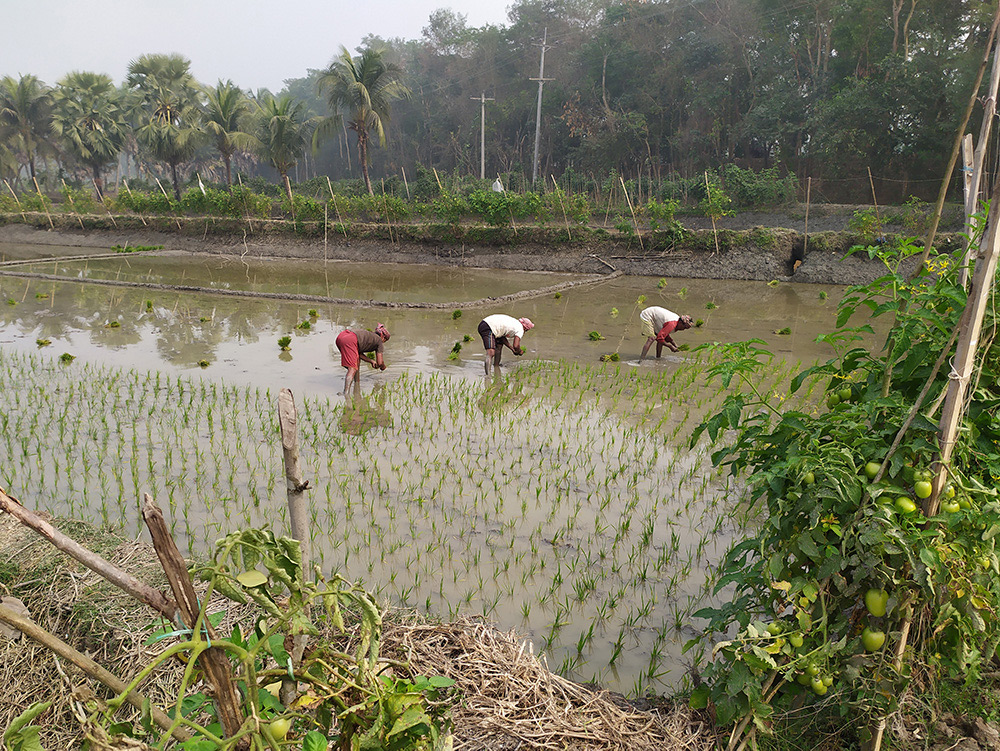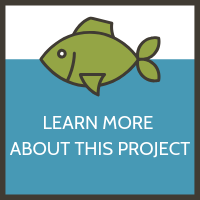
Laura Zseleczky
A world of opportunity is growing beneath the surface of ponds across Bangladesh. Aquaculture is a key sector of the national economy, producing micronutrient-rich food with the potential to improve food and nutrition security and livelihoods throughout the country. However, like many low- and medium-income countries, Bangladesh struggles to maintain accurate official statistics on aquaculture production because of the costly and time-intensive nature of data collection as well as the industry’s rapid growth. The Feed the Future Innovation Lab for Fish (Fish Innovation Lab) is working with partners in Bangladesh to use emerging technologies like remote sensing and machine learning to improve the speed, cost, and effectiveness of aquaculture data collection.
“Having access to good data is fundamental to making good policy decisions,” said Ben Belton, lead PI of the Fish Innovation Lab project on Harnessing Machine Learning to Estimate Aquaculture Production and Value Chain Performance in Bangladesh. Inadequate information makes it difficult to plan and manage aquaculture development or design investments, policies, and interventions effectively. The project aims to help improve the accuracy of official statistics and enhance capacity to target investments and regulation for sustainable aquaculture development in Bangladesh.
Integrating data to see the aquaculture value chain clearly
The project is using remotely sensed data (through satellite imagery) and machine learning algorithms (using computer models to improve automatic prediction) to detect bodies of water used for aquaculture. This information is integrated with data collected through representative surveys of farmers and business owners in the aquaculture value chain. Together, these data will help researchers and policymakers better understand issues related to fish production, economic value, employment, nutrition, and animal health—all at the regional scale.
Researchers are also conducting video interviews with farmers and other value chain actors to learn about their innovative aquaculture practices. The interviews will be edited to create short extension videos to disseminate through social media. This approach is intended to replicate word-of-mouth information sharing by farmers, the main conduit for information on new farming practices.
These approaches will contribute high quality data to the information collected through existing data systems, according to Mohammad Mahfujul Haque, the project’s Bangladesh PI. The project is working with local graduates of fisheries programs to build capacity for collecting, monitoring, and cleaning the data and using the latest technologies such as tablet-assisted survey collection tools, said Haque.
Led by Michigan State University in partnership with Bangladesh Agricultural University, WorldFish, and the International Center for Tropical Agriculture, the project is working in seven districts of southwest Bangladesh. These areas are particularly important for the country’s aquaculture sector and include brackish water shrimp farms as well as freshwater prawn and fish production. The southwest region of the country is also the main producer of frozen seafood, the second most important export (as a share of export earnings) of Bangladesh.
One year into the project, researchers have completed the farm surveys and are making progress with the remote sensing work.
“We are already able to identify waterbodies used for aquaculture with a high degree of accuracy, but are now refining the model further to distinguish between different types of aquaculture farms (e.g., shrimp ponds, integrated prawn-rice farms, fish ponds),” said Belton.
The project team is comparing their findings to data collected eight years ago through a study led by Michigan State University and observing how farming systems have changed. Belton said the changes include more intensive integration of vegetable cultivation on pond dikes, new varieties of fish seed, and increasing numbers of auction markets and traders, which suggests that fish production has increased rapidly in less than a decade.
Developing data tools for policymakers and stakeholders
The data from the remote sensing component and field surveys will be made available to the public online through an interactive dashboard and data visualization tool. The project team will consult with representatives from the Department of Fisheries, Bangladesh Fisheries Research Institute, Ministry of Planning, and nongovernmental organizations to ensure that their needs and priorities help inform the development of the online tools.
The researchers hope these stakeholders will ultimately use the tools to inform their planning decisions in the future. For example, said Belton, “Geospatial information is essential for any type of land use zoning plan and will increasingly play a role in supporting certification and ensuring traceability, so there are lots of potential uses.”
The survey datasets will also be made available through an open access platform at the end of the project for use by other researchers in the future.
Applying lessons nationwide and beyond
As the aquaculture sector continues to grow in Bangladesh, it is increasingly important for policymakers and investors to have accurate, up-to-date information for planning and sustainable growth.
The use of emerging technologies to facilitate data collection and improve these data systems holds great potential beyond the scope of the Fish Innovation Lab project.
“We hope that with proof of concept from this project we will be able scale up the effort to make it nationwide in the future and to transfer the methodology to other countries,” said Belton.
With improved data systems and more effectively targeted policies and investments, the aquaculture sector has the potential to improve incomes, grow jobs, and provide a sustainable source of nutritious food for the Bangladeshi people for years to come.
Published February 19, 2021

